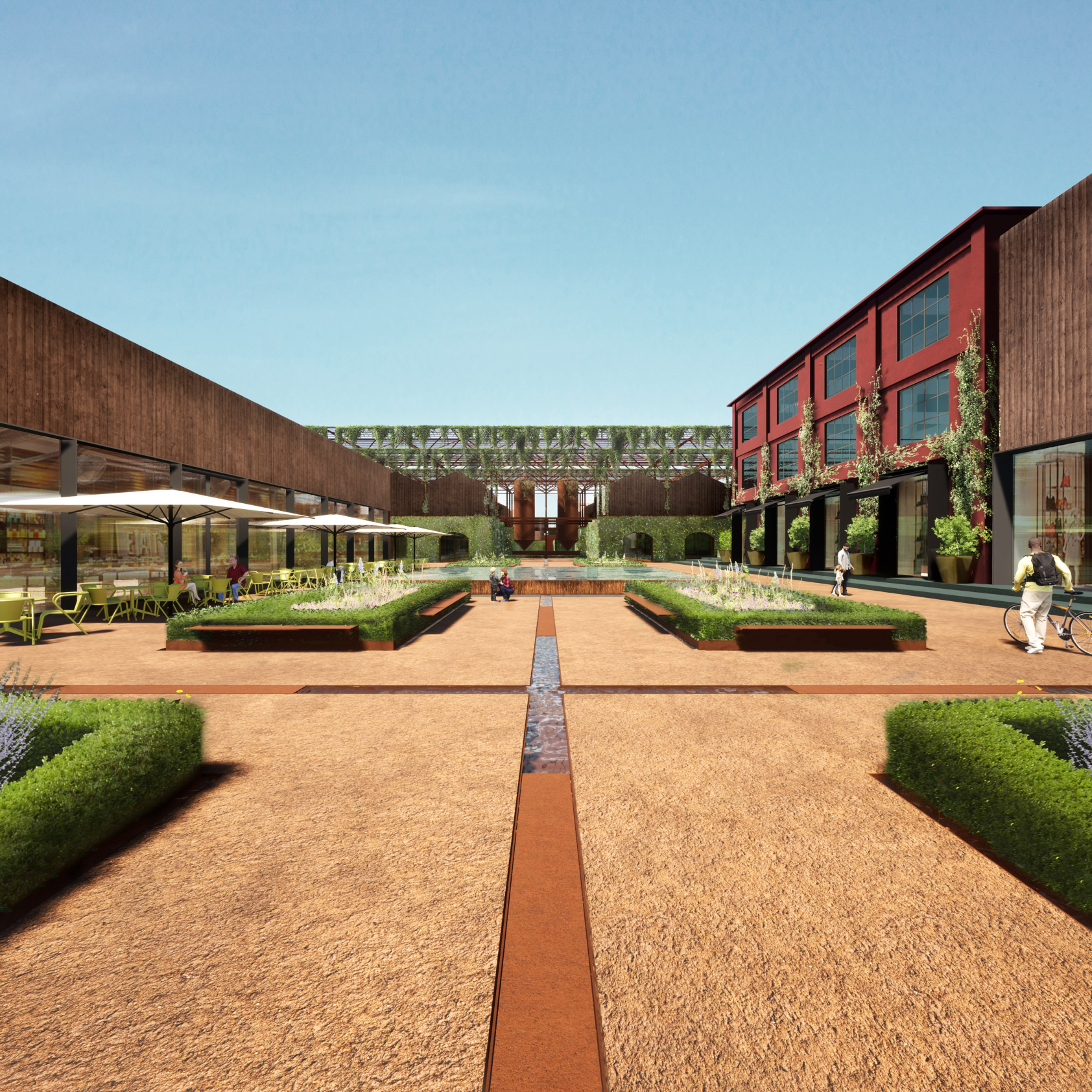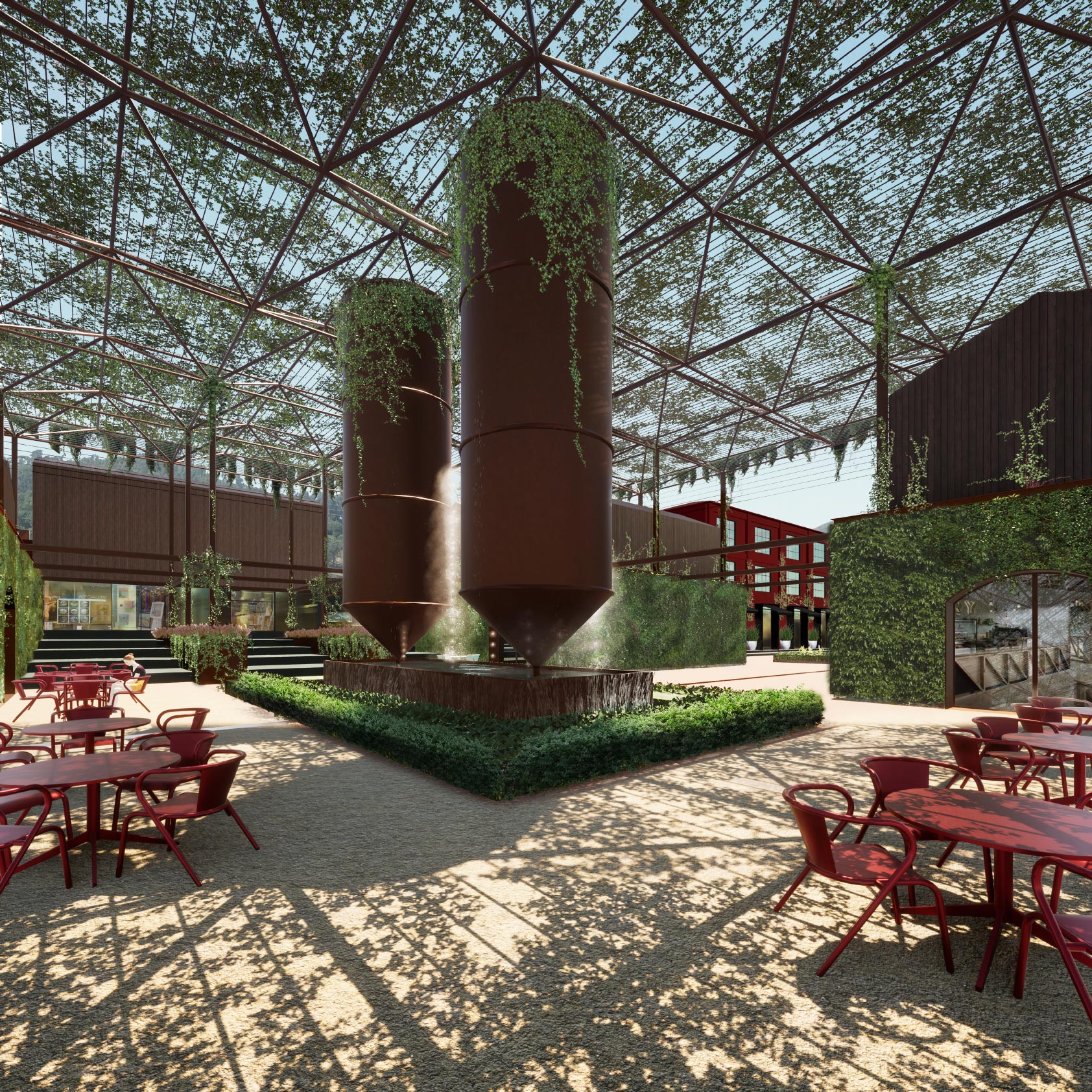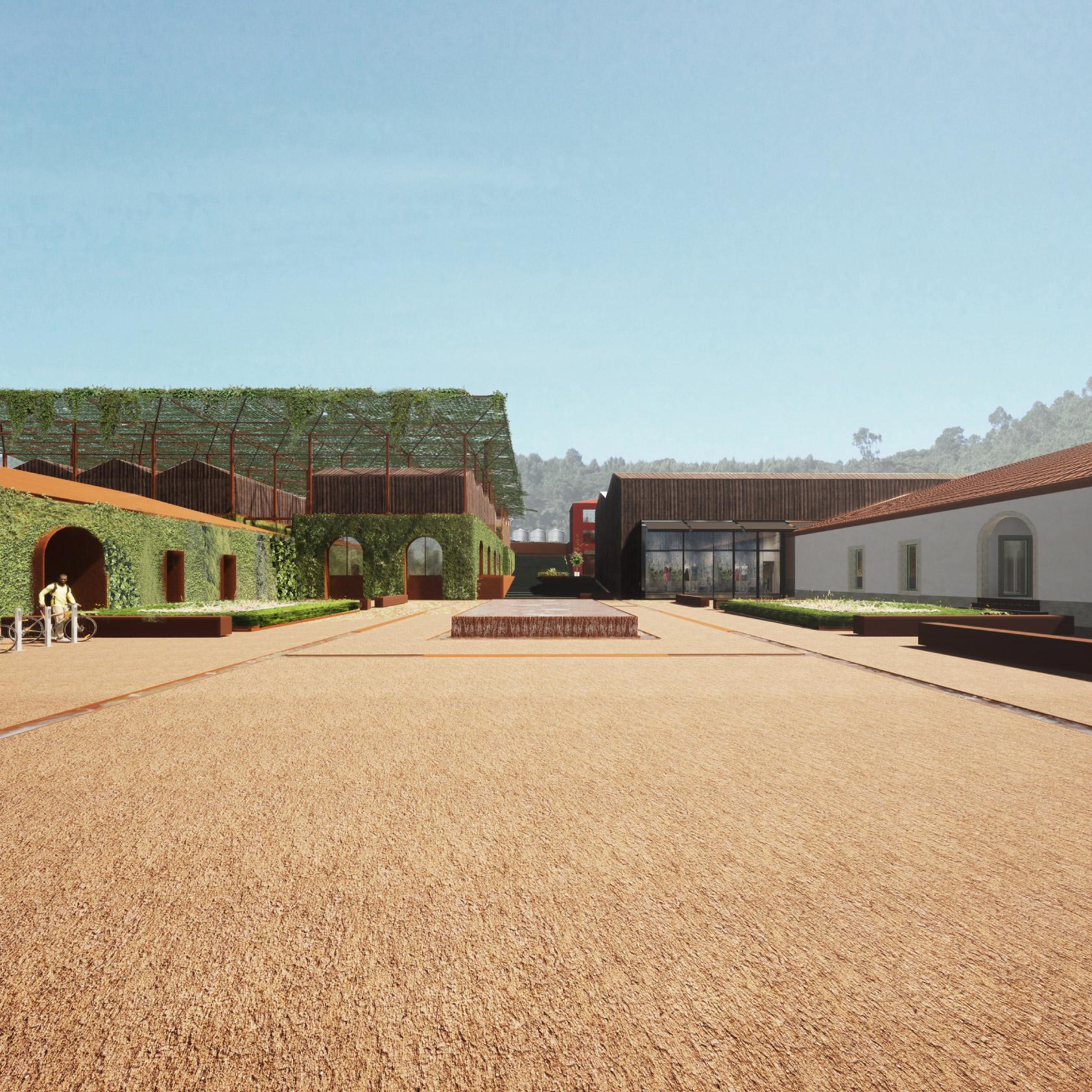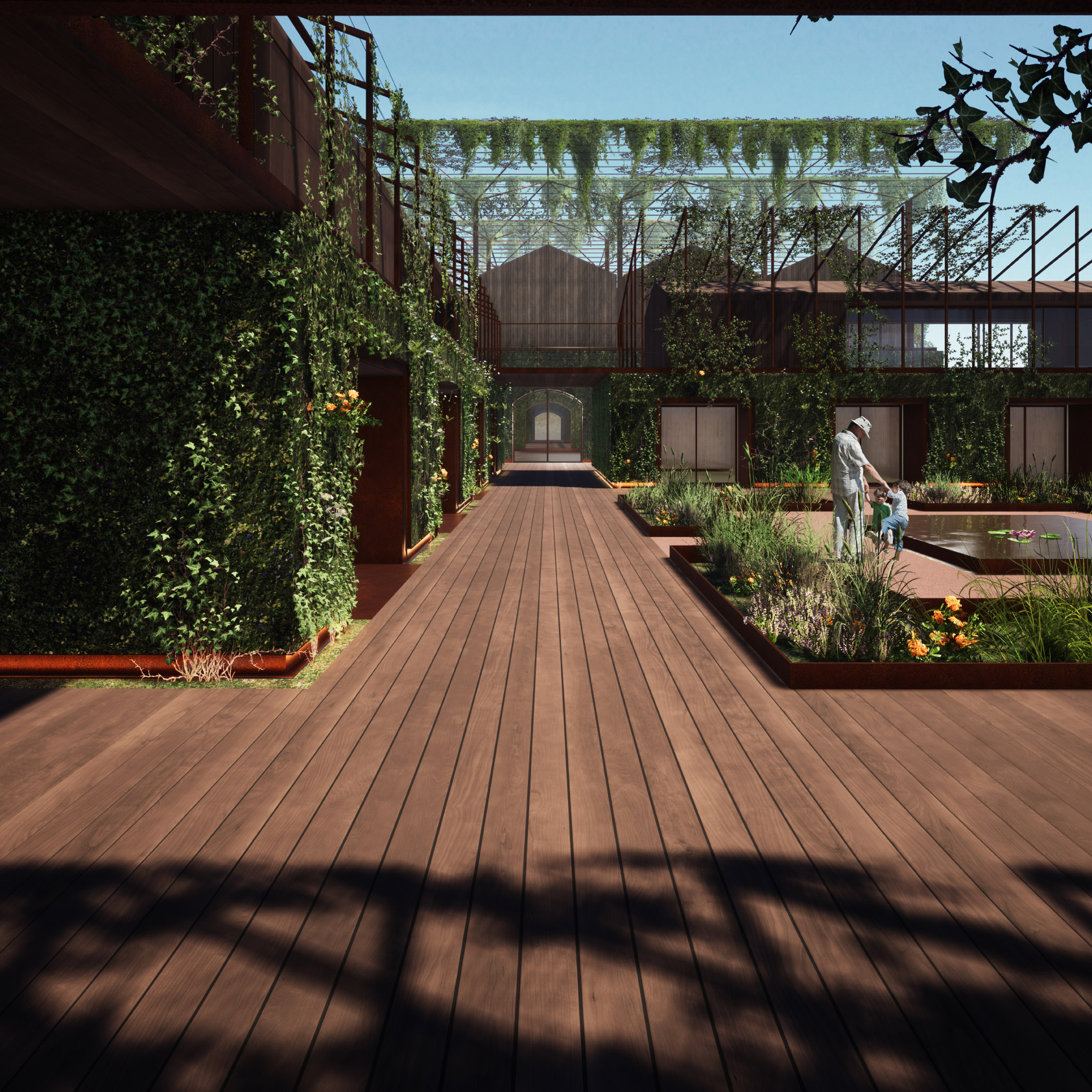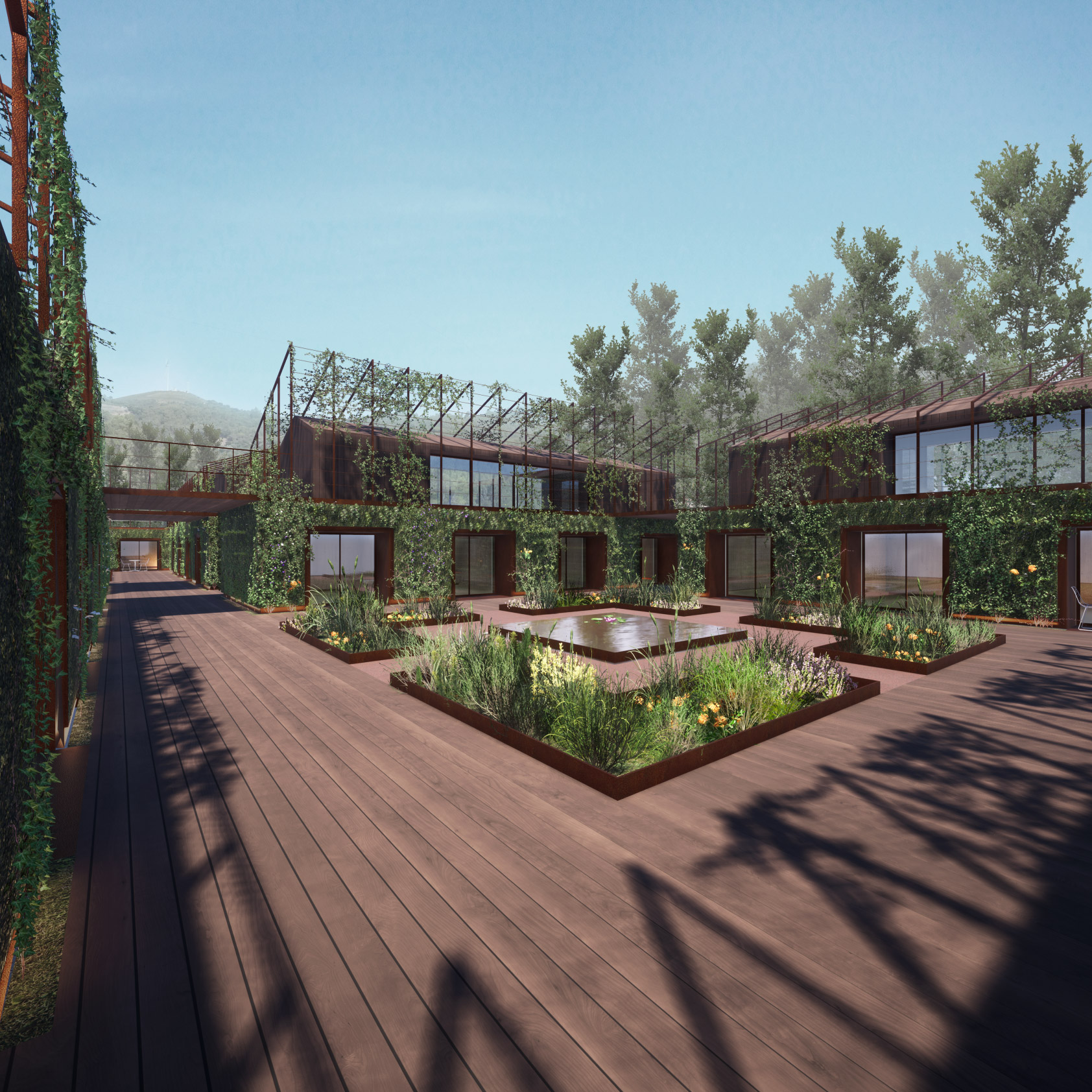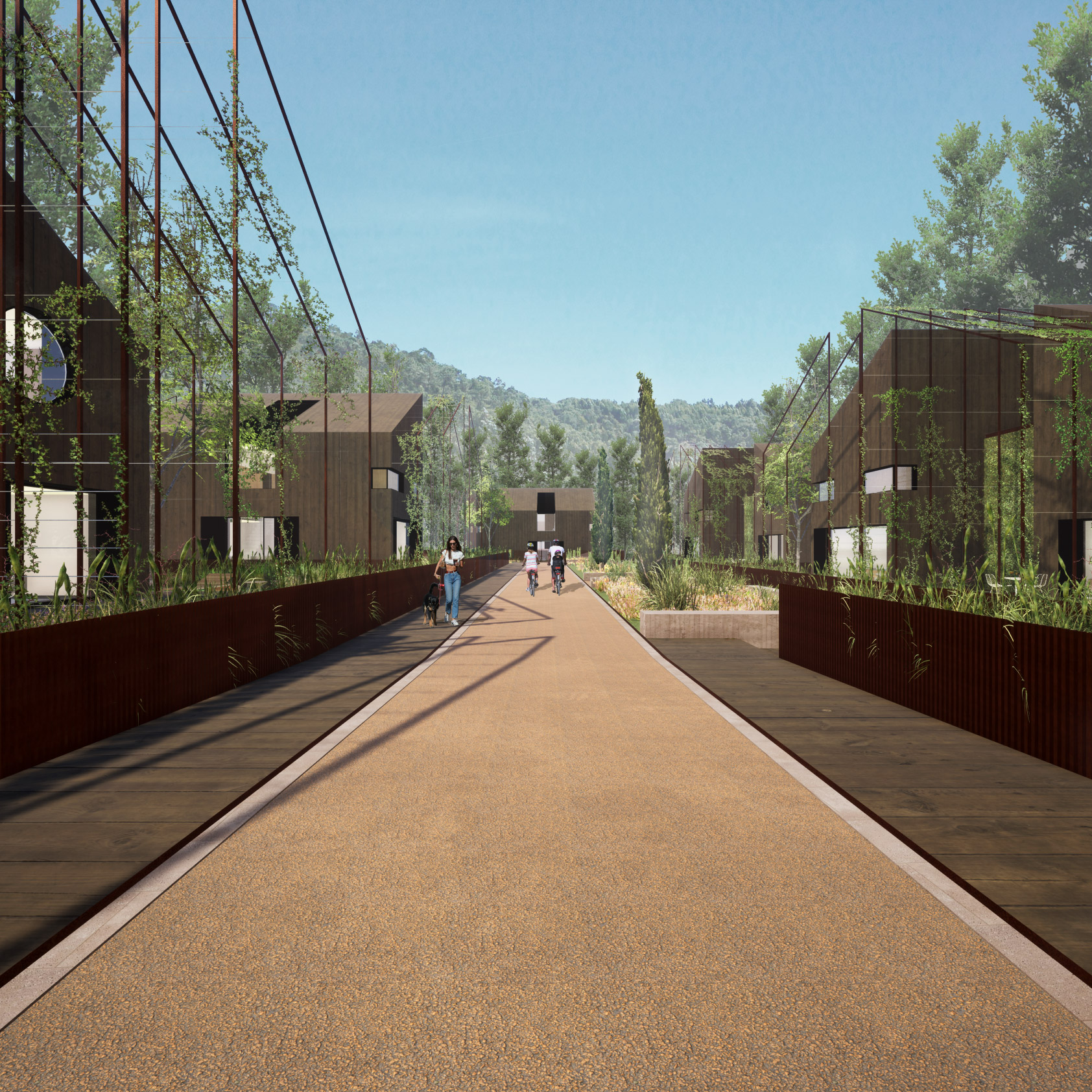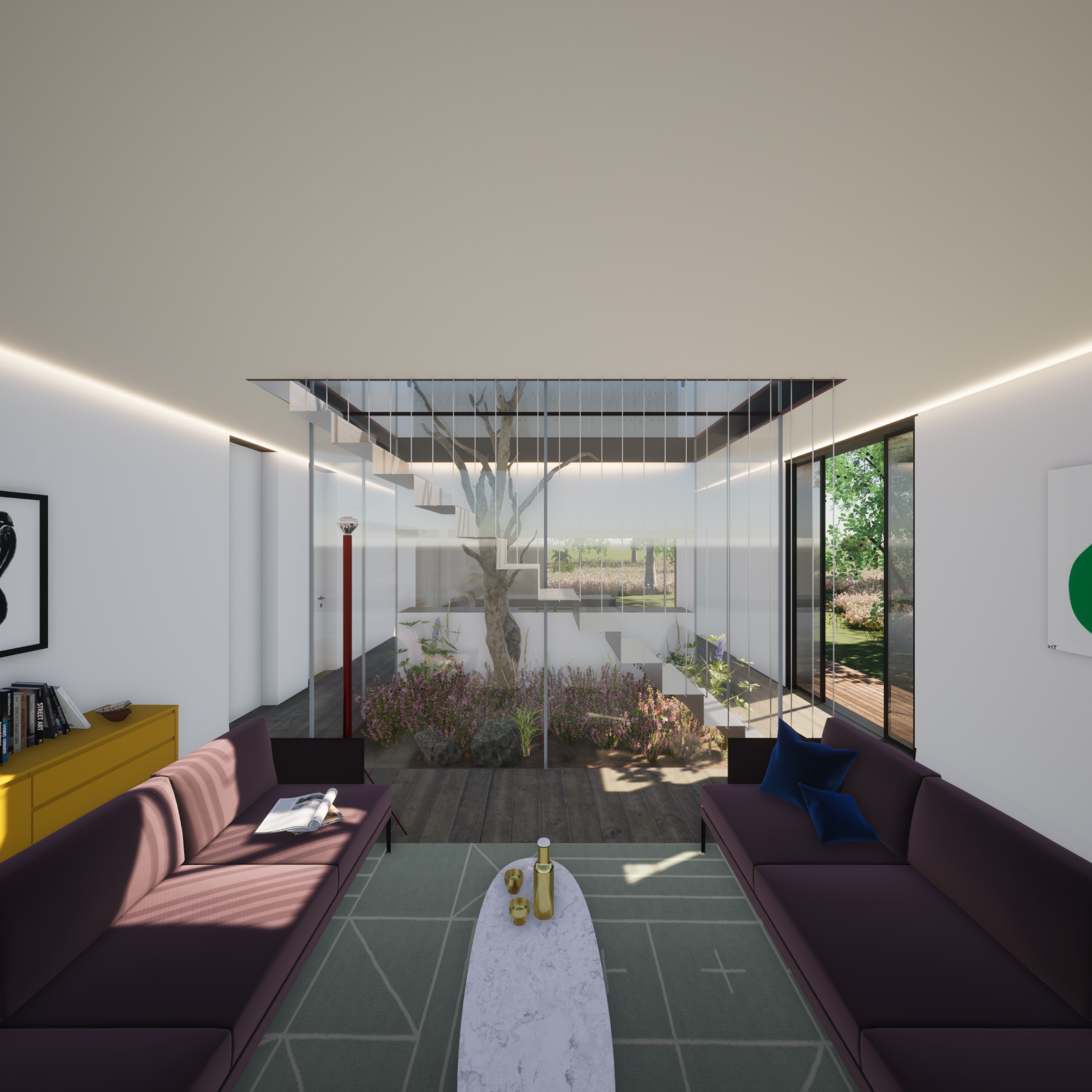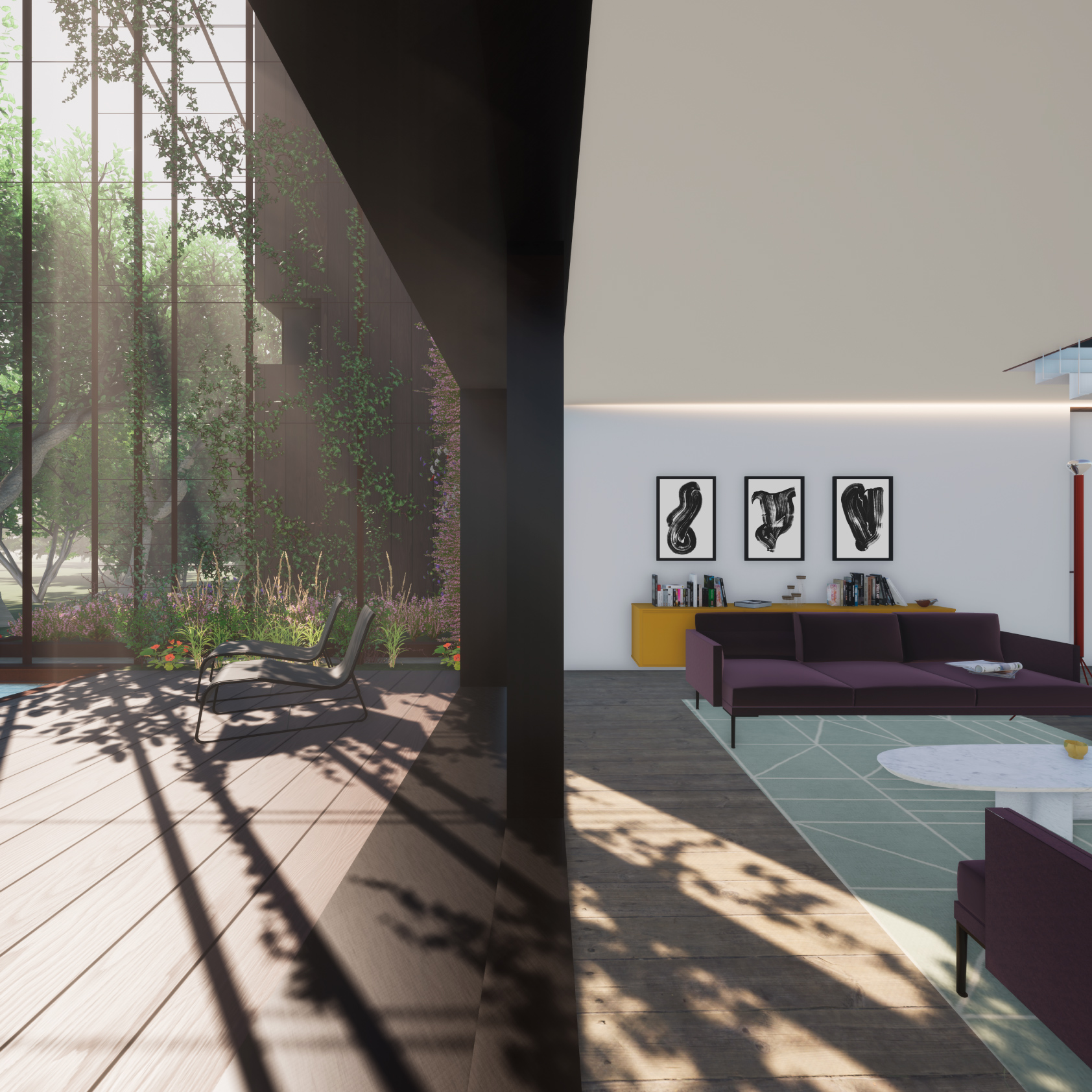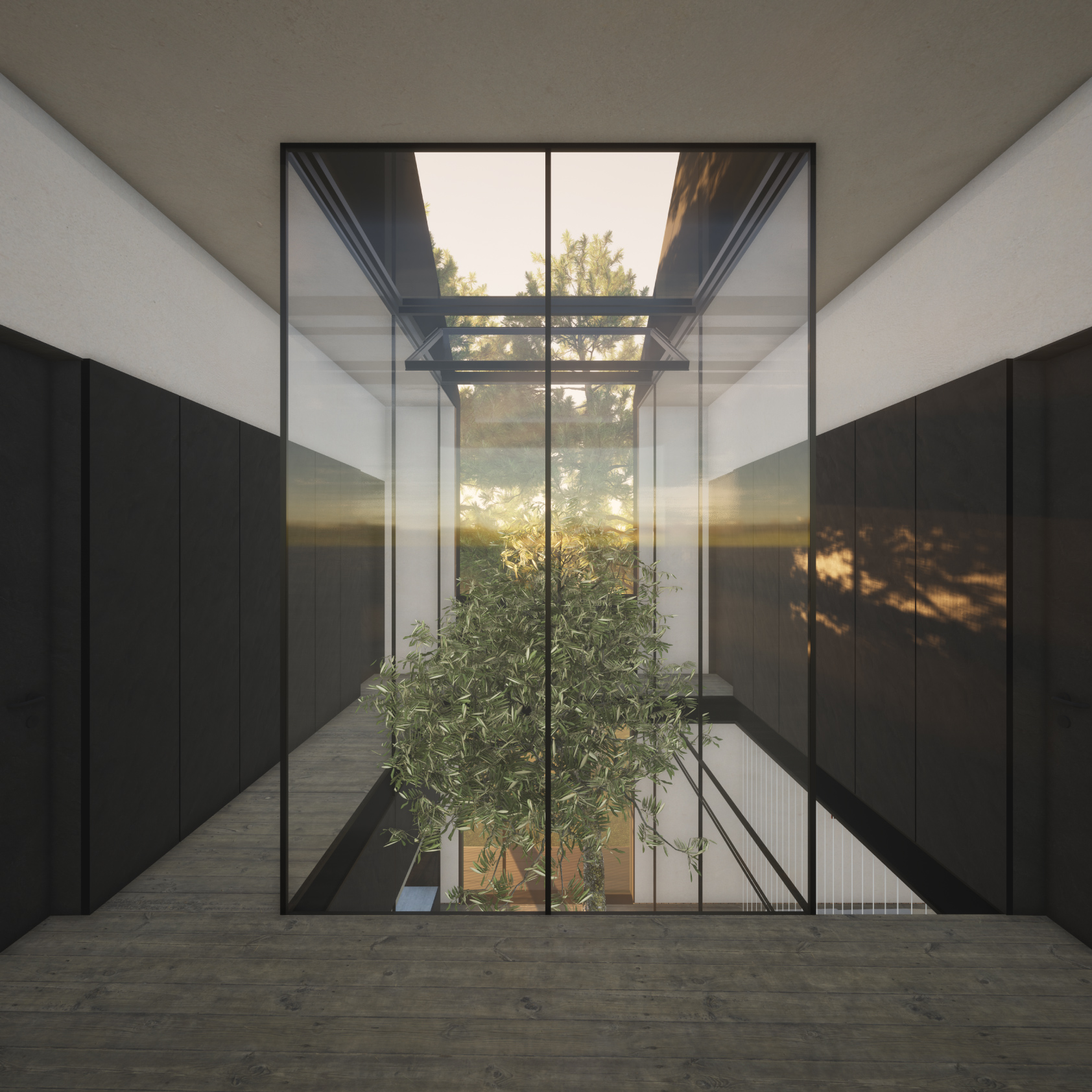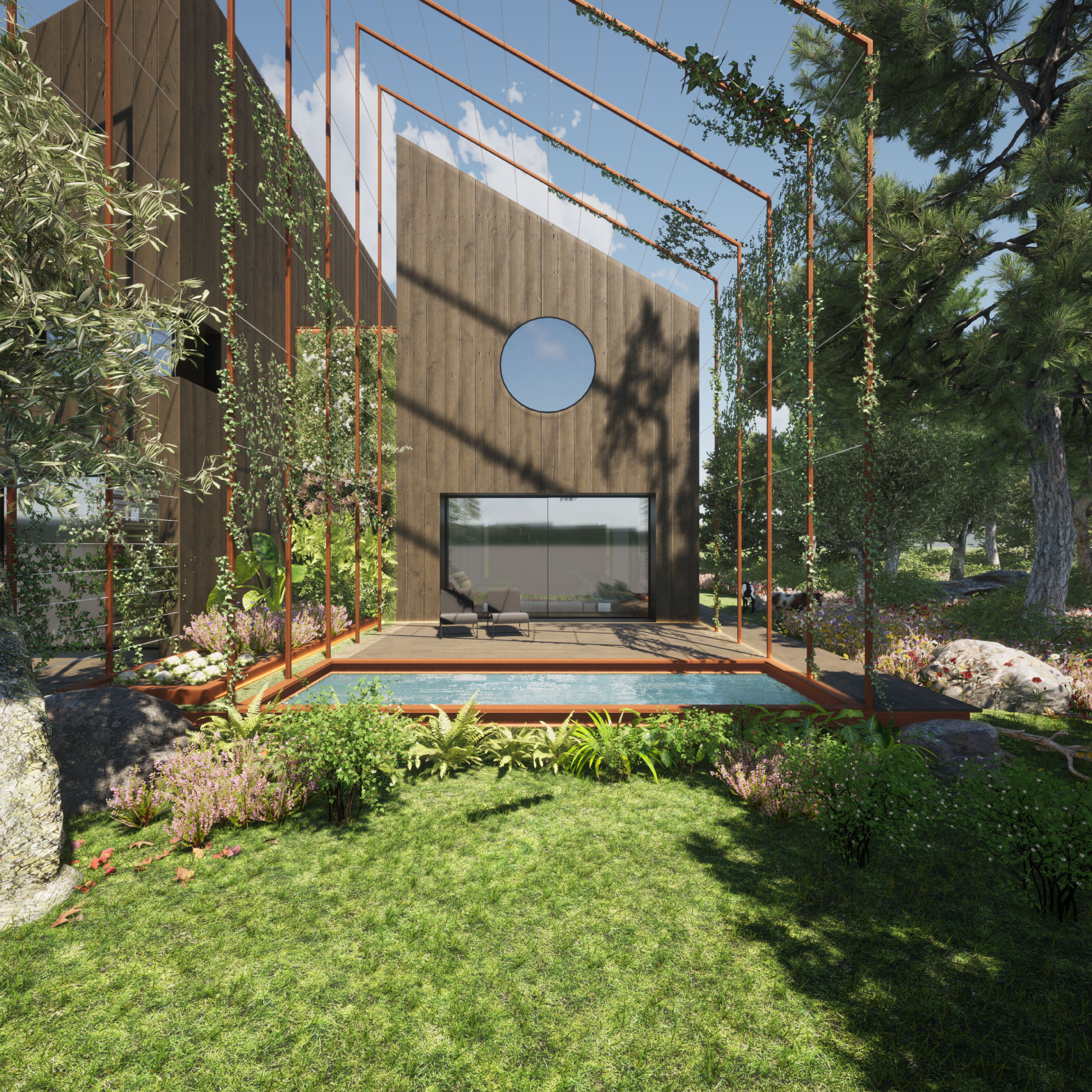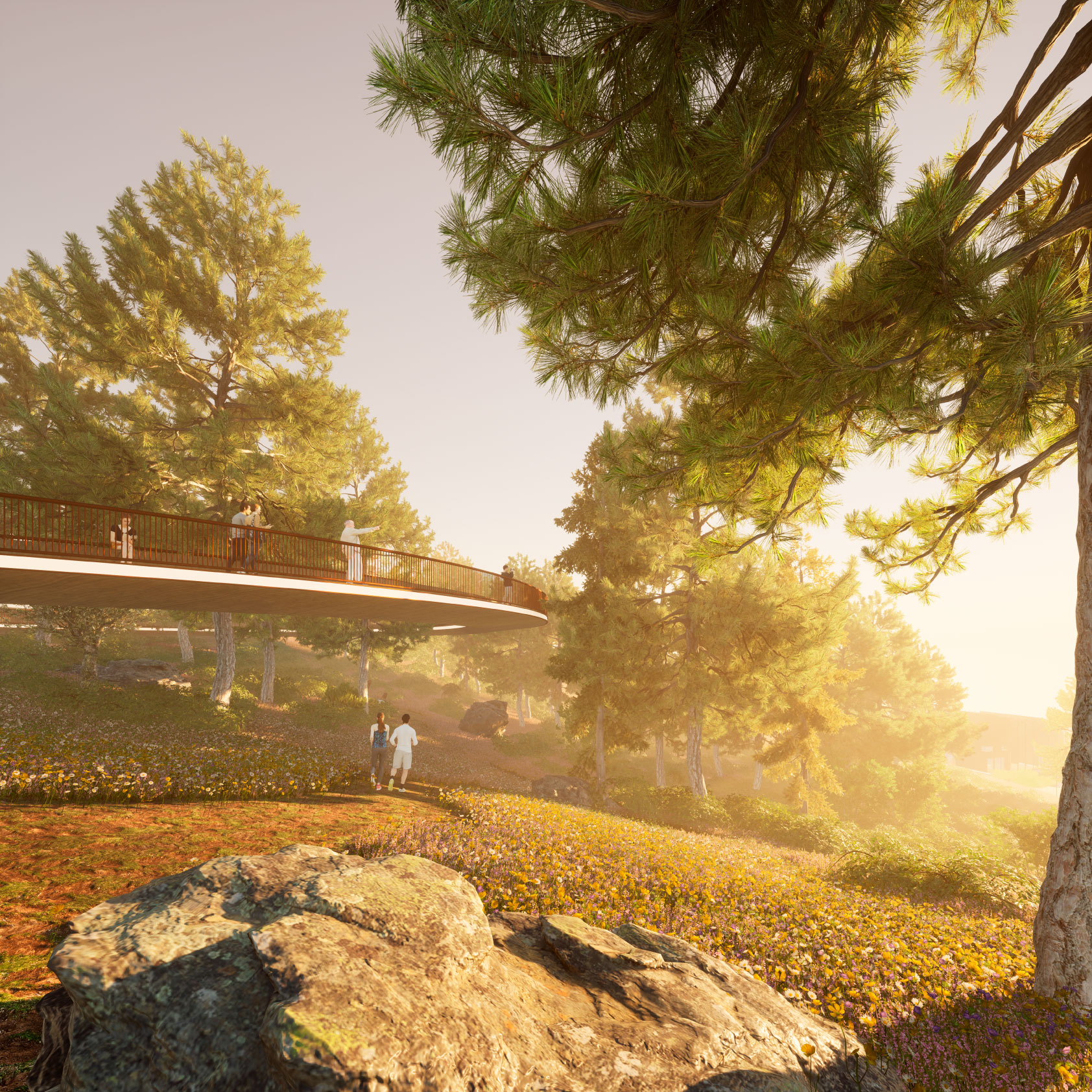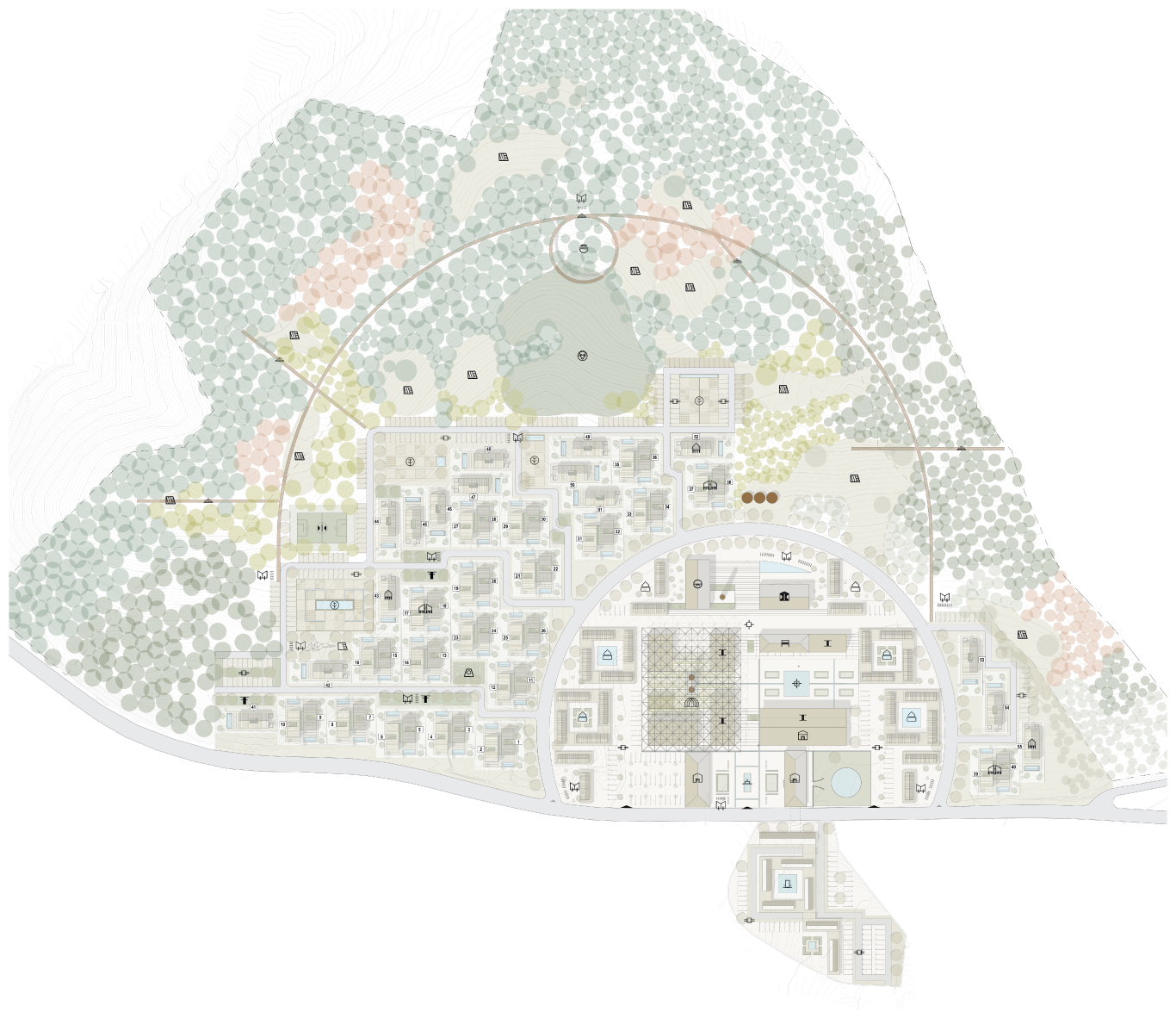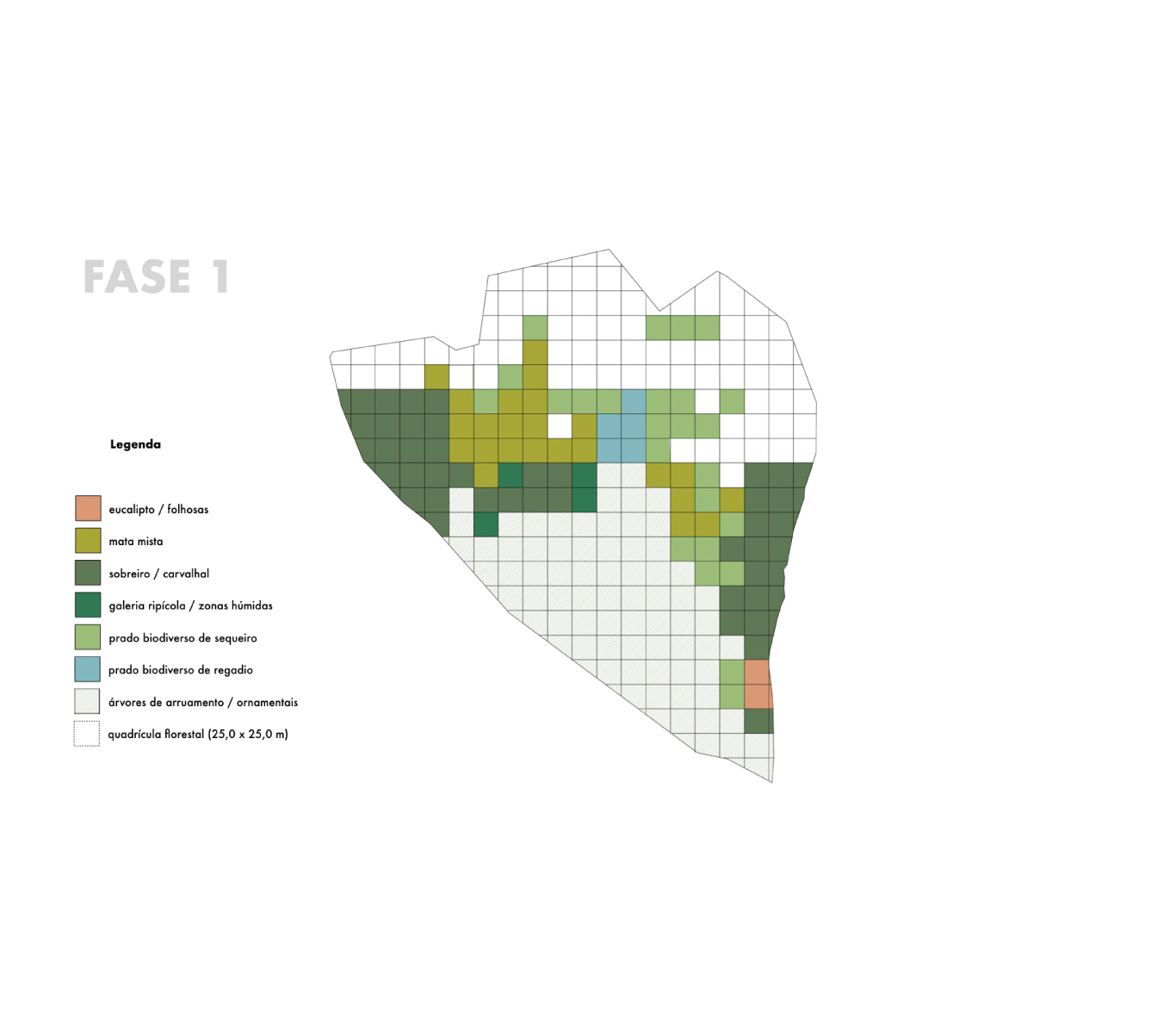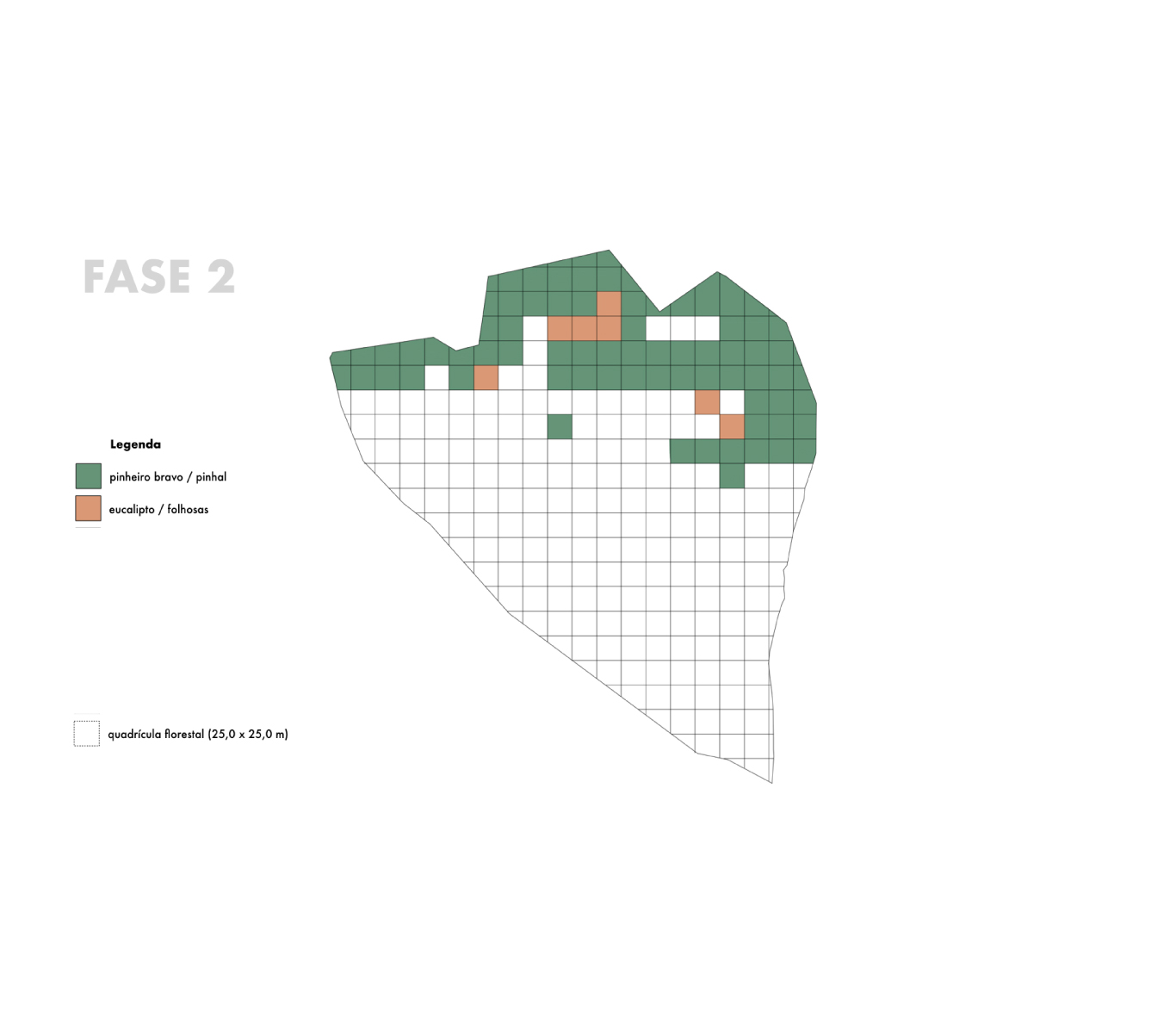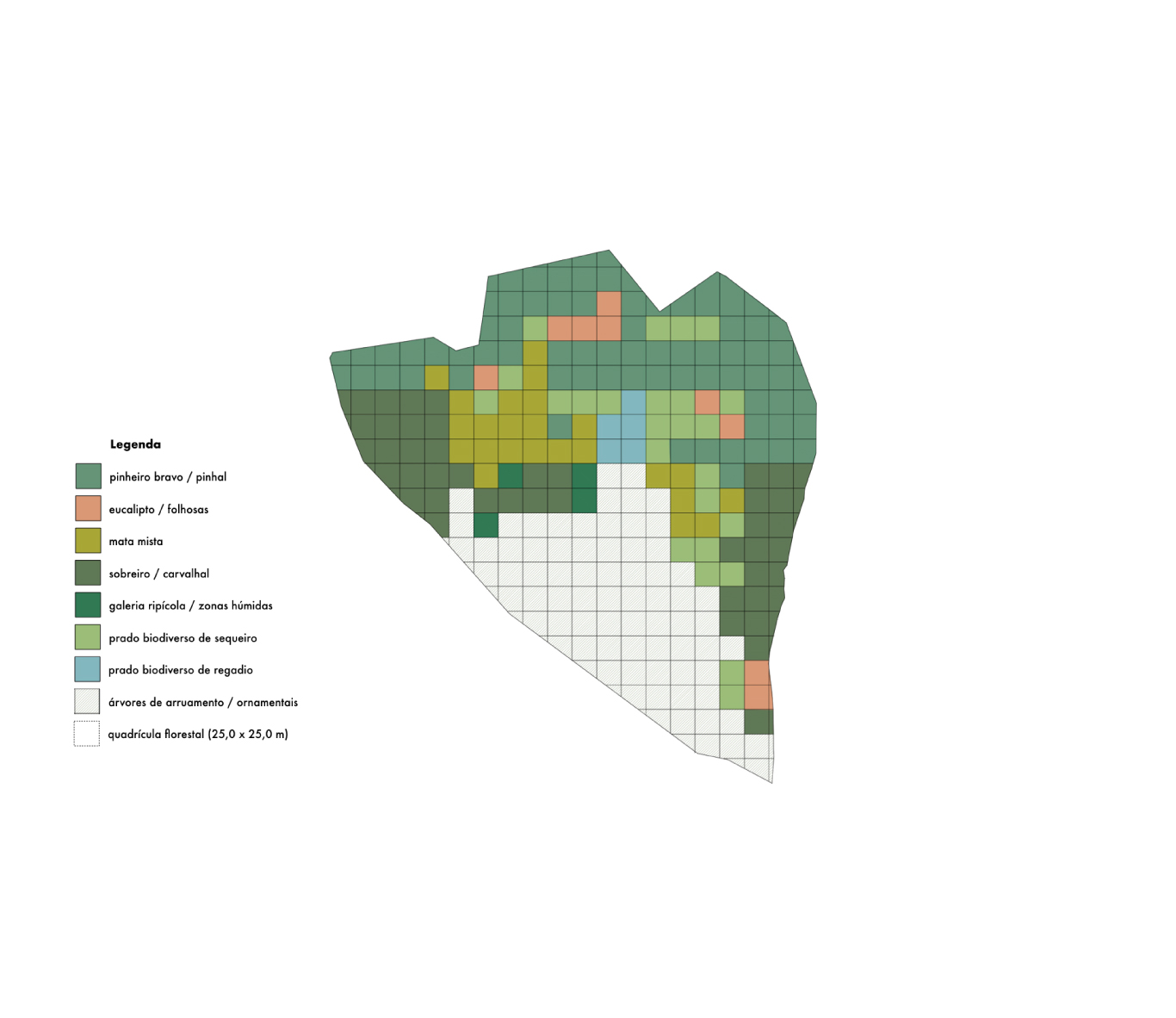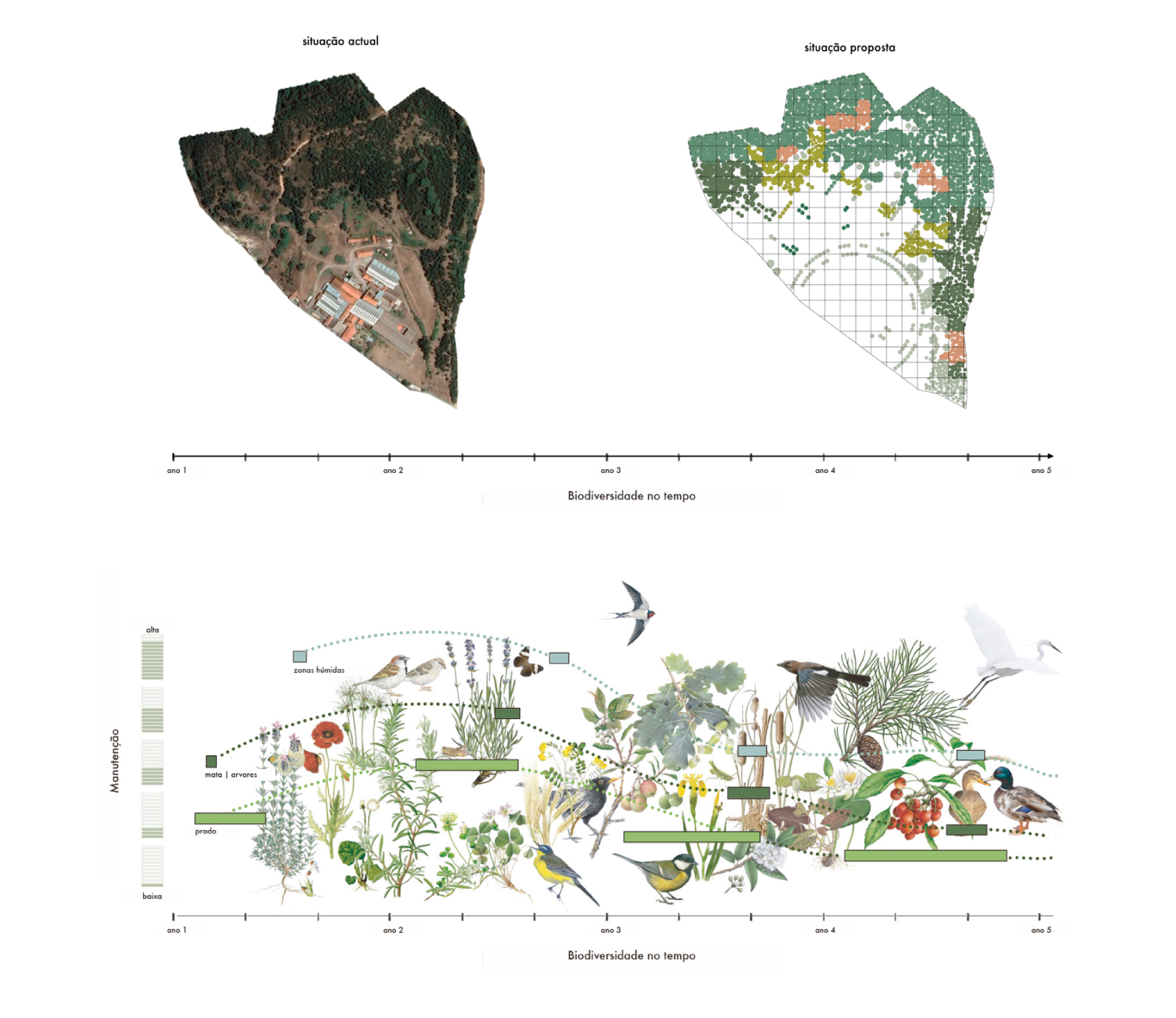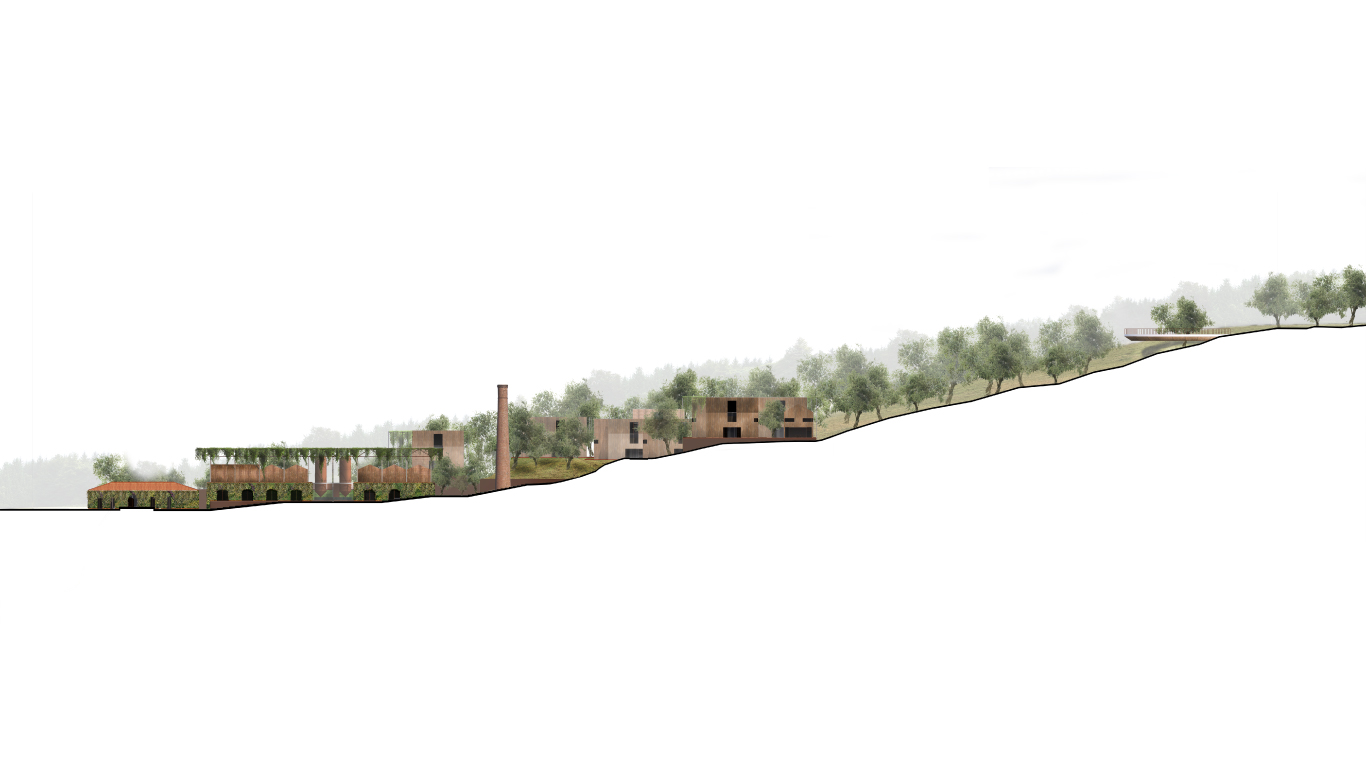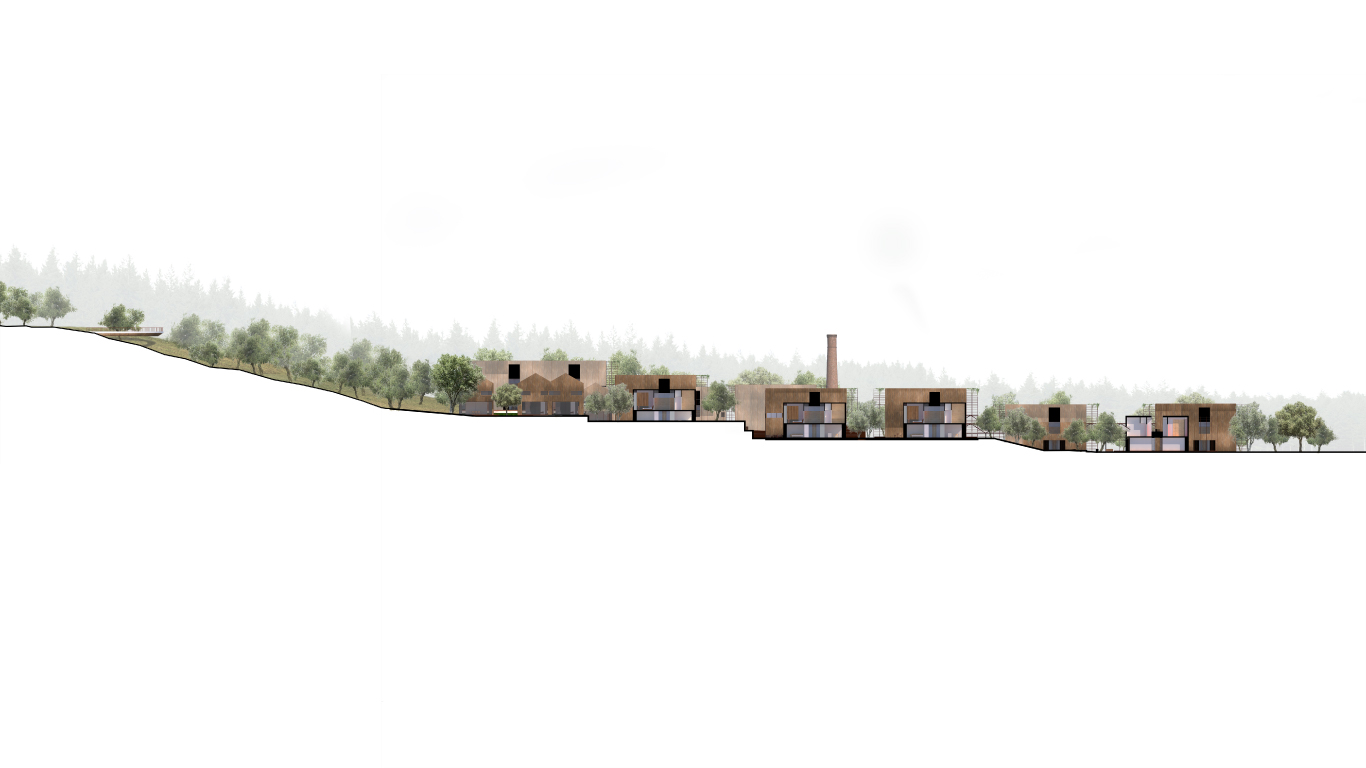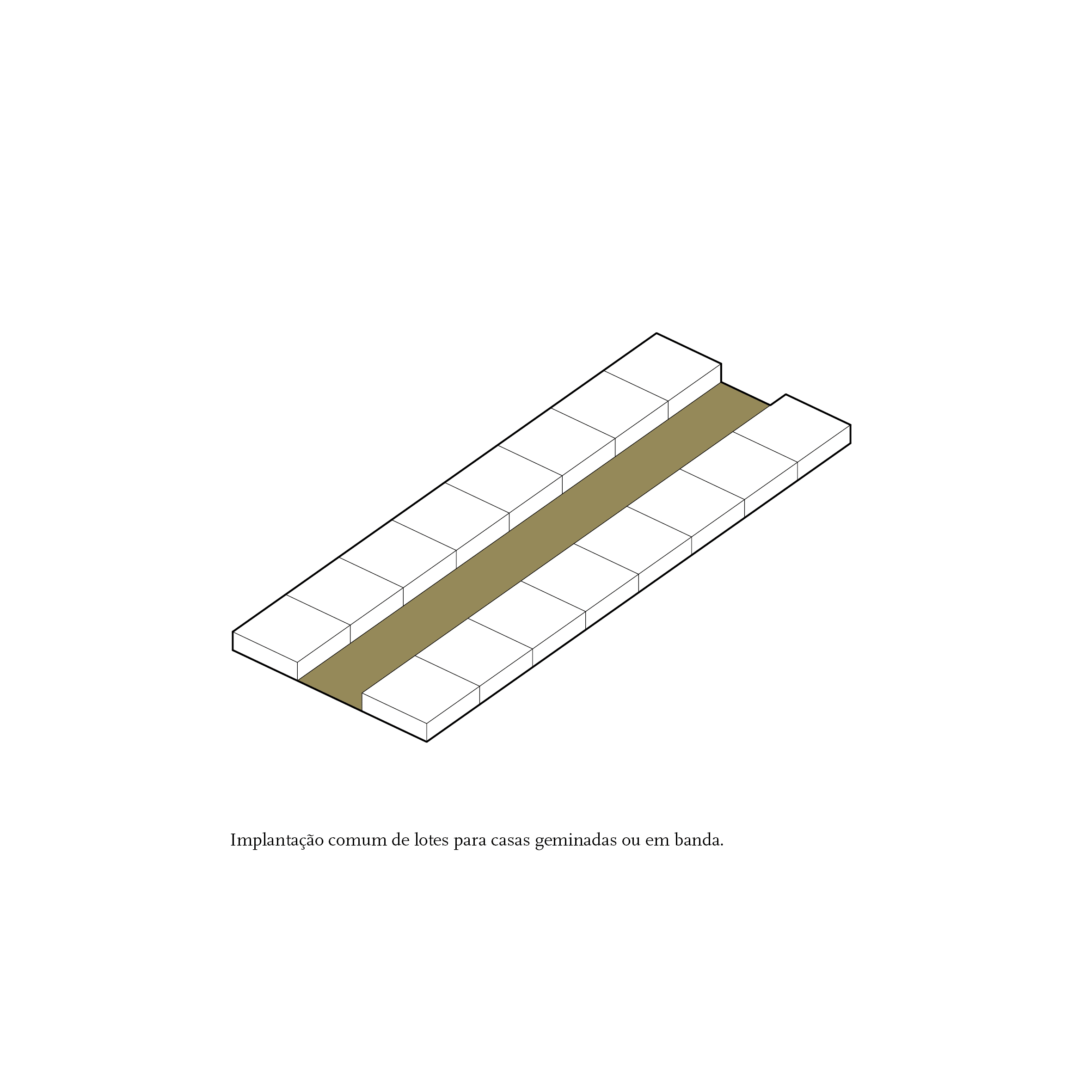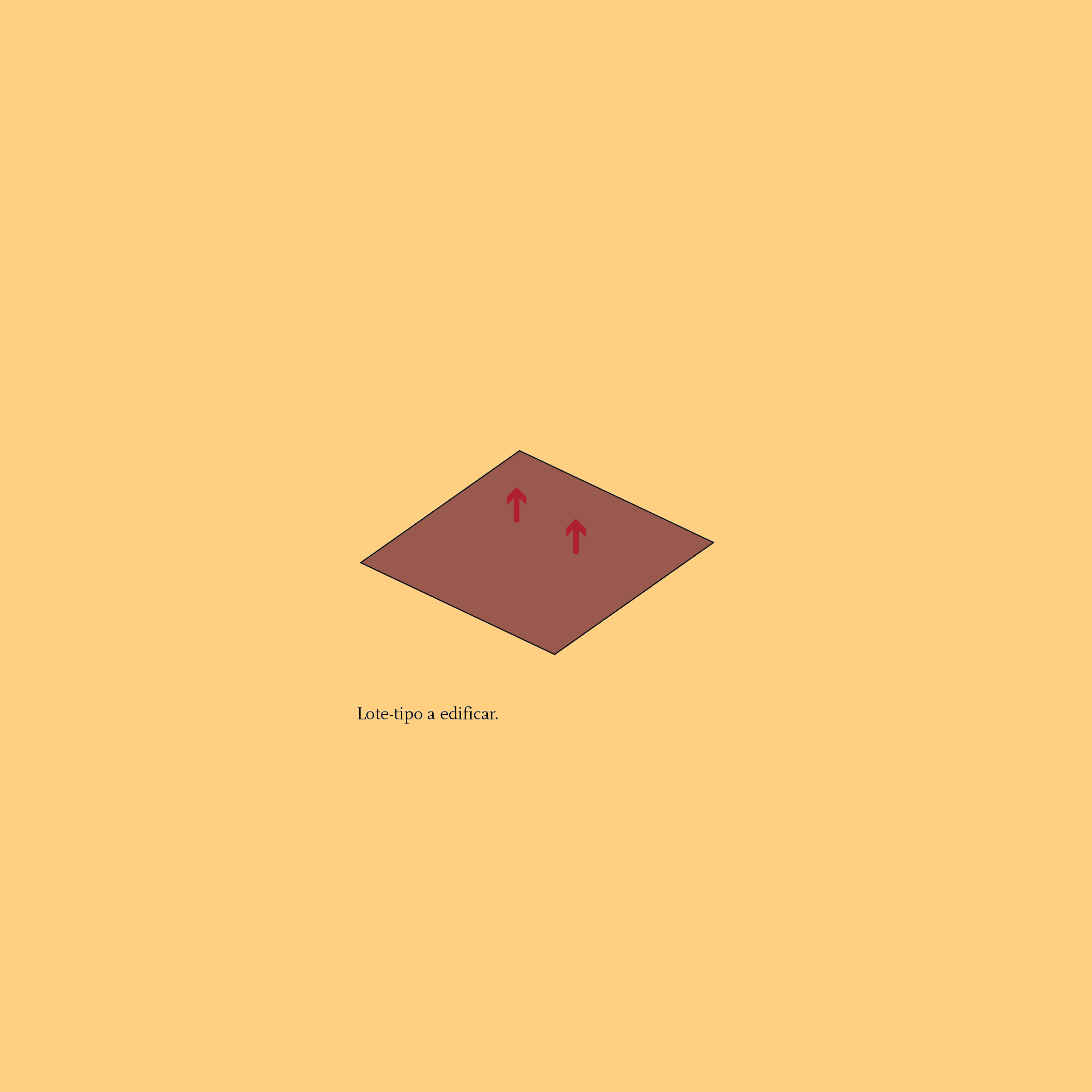Quinta da Freixeira is in the parish of Lousa, in the municipality of Loures. The territory of Lousa is very rich morphologically, being surrounded by the mountain triangle designed by the mountains of Atalaia, Carregueira and Serves. In fact, Quinta da Freixeira is located on one of the banks of the Sacavém stream or the Trancão river, in an elevated position in the valley, with good sun exposure to the south and west and with moderate slopes. Quinta da Freixeira is an important historical landmark for the municipality. This was built in the first half of the 18th century, at a time of strong agricultural dependence. Here was located the rural palace where D. João V stopped on his way to inspect the works of Convento de Mafra. This building and its gardens can still be visited today. In the 20th century, it became an important industrial pole dedicated to the production of olive oil, soy oil and animal feed. Nowadays, the degraded industrial buildings have a great impact on the landscape because despite being vacant, they occupy an area of about 1200 sqm.
We propose, as a fundamental principle, the safeguarding of the identity of the industrial complex, demolishing some degraded or dissonant elements. We guarantee a structuring intervention that maintains the physical limits of some buildings, celebrating historical memory by preserving an image that adapts to new spatial and programmatic requirements, without resorting to excavations.
To respond to the program and the site, we designed a circular line that holds to the natural shape of the land and incorporates the industrial complex. This circle, the road network, defines the privacy of our project: inside we create centrality; outside, isolated and twin houses spread across the land lines.
The center is the heart of the proposal: an area reserved to a hangar with shops, coworking spaces, start-ups, workshops, lounge and restaurant areas, museum, artistic residences, shops, sports center, kindergarten, and services.
Within this area, we propose the location of the senior residences that involve the central nucleus. The implantation allows the fluidity of mobility to the central area, such as the creation of patios that design another type of outdoor space, more private, more contained.
Close to the center is the U.C.C.I., on the south side, which aims to provide the necessary tranquility to users, not separating them from the rest of the program.
The public space communicates through three squares on different levels, connected by a central axis that runs through it. The game of squares and the articulation between the different programs promote socialization, creating ways of community connection.
We designed the housing area through a set of mismatched lots, whose implantation is adapted to the modeling of the terrain, avoids the creation of wind tunnels, and promotes views of the houses.
The twin houses are mismatched, privileging the privacy of each house. Together with the isolated houses, they build sculptures on the ground, with different shadows, rhythms, and distances, dematerializing the scale of the lot. The common space varies between grassy parking lots, green wooded areas, dog parks, a sports field, and community gardens.
The forest adjacent to the houses has a plan that provides the introduction of diversified and native trees to protect the soil and the biodiversity. The new walkway connects several points of the land and serves as an efficient tool in the territorial management of fires, as it designs multiple platforms that allow a wide observation of the land.
In the central space, the proposal reinforces the architectural identity of the industrial complex through prefabricated metal structures, new and used, using the colors and materials of the chimney and the silos we maintain. The introduction of various green elements on the facade improves air quality, allows thermal control, noise reduction, sun protection, and improves the ecological balance, assuming this facade as a skin with different shades and smells. Appealing to invitation, comfort, and well-being, we designed a network of canals that takes advantage of rainwater, minimizes the thermal amplitude, suggests the fertility of these spaces, reflects the sky and hints at the sounds that will become memory.
In senior residences and houses, we propose a construction solution in “CLT”. This system not only reduces global carbon emissions, but it is also innovative. It is self-supporting, reduces months of construction due to ease of manufacture and quick assembly, and offers cost-effective solutions compared to traditional building systems. CLT panels have better fire and seismic resistance, and better acoustic and thermal insulation properties.
